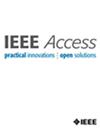赫拉克勒斯:触觉遥控超声检查系统
IF 3.4
3区 计算机科学
Q2 COMPUTER SCIENCE, INFORMATION SYSTEMS
引用次数: 0
摘要
本研究的主要目的是调查并证明使用触觉遥控超声检查系统(HERCULES)进行即时超声检查的可行性和实用性。机器人超声是一门新兴的重要技术。这项技术可以帮助对潜在传染性患者进行超声成像,同时最大限度地降低超声检查人员(超声检查人员)的感染风险。本研究评估机器人超声系统是否可以减少超声医师承受的肌肉骨骼损伤。我们开发了一种触觉驱动的机器人超声系统,它在整个扫描过程中为超声医师提供触觉。该系统具有触觉功能,超声医师可以远程感受到接触力,并能够适当地施加压力以保护患者。该系统配有各种力阈值。超声医师可以观察病人以及换能器的位置和方向。捕获了500多张机器人图像,并由放射科专家进行了补充评估,以提供对图像质量的初步见解。临床试验共纳入56例受试者,其中女性31例,男性25例,年龄21 ~ 55岁。在常规扫描和机器人扫描期间,对超声医师肌肉的刺激也进行了评估。结果,超声医师发现背部和颈部肌肉、右侧拇短外展肌和右侧C4棘旁肌的明显缓解,从手动到远程操作分别减少了88.12%、89.19%、93.57%、82.0%、72.83%和75.1%。研究对象还报告说,在机器人超声扫描过程中,他们的体验要舒服得多。本文章由计算机程序翻译,如有差异,请以英文原文为准。
HERCULES: Haptically-Enabled Remotely Controlled Ultrasound Examination System
The main purpose of the study is to investigate and demonstrate the feasibility and practicality of using a haptically-enabled remotely controlled ultrasound examination system (HERCULES) to perform point-of-care ultrasound. Robotic ultrasound is an emerging and important technology. This technology can help in performing ultrasound imaging in potentially contagious patients while minimizing risks of infections for sonographers (persons who perform ultrasound). This study assesses whether the robotic ultrasound system can reduce the musculoskeletal injuries sonographers endure. We developed a haptically-enabled robotic ultrasound system, which provides sonographers with a sense of touch throughout the scan. The system has haptic capabilities in which the sonographer can feel the contact force remotely and would be able to apply pressure appropriately to safeguard the patient. The system is equipped with various force thresholds. The sonographer can view the patient as well as the transducer’s position and orientation. More than 500 robotic images were captured, and a supplementary evaluation by expert radiologists was conducted to provide initial insights into image quality. In total, 56 subjects, 31 female and 25 male, aged from 21 to 55 years, participated in the clinical trials. An assessment is also carried out on the stimulation of the sonographer’s muscles during conventional vs. robotic scanning. As a result, the sonographer experienced substantial relief in back and neck muscles, right abductor pollicis brevis and right C4 paraspinal, by 88.12%, 89.19%, 93.57%, 82.0%, 72.83%, and 75.1% reduction from manual to teleoperated scenario, respectively. Subjects also reported a much more comfortable experience during robotic ultrasound scans.
求助全文
通过发布文献求助,成功后即可免费获取论文全文。
去求助
来源期刊

IEEE Access
COMPUTER SCIENCE, INFORMATION SYSTEMSENGIN-ENGINEERING, ELECTRICAL & ELECTRONIC
CiteScore
9.80
自引率
7.70%
发文量
6673
审稿时长
6 weeks
期刊介绍:
IEEE Access® is a multidisciplinary, open access (OA), applications-oriented, all-electronic archival journal that continuously presents the results of original research or development across all of IEEE''s fields of interest.
IEEE Access will publish articles that are of high interest to readers, original, technically correct, and clearly presented. Supported by author publication charges (APC), its hallmarks are a rapid peer review and publication process with open access to all readers. Unlike IEEE''s traditional Transactions or Journals, reviews are "binary", in that reviewers will either Accept or Reject an article in the form it is submitted in order to achieve rapid turnaround. Especially encouraged are submissions on:
Multidisciplinary topics, or applications-oriented articles and negative results that do not fit within the scope of IEEE''s traditional journals.
Practical articles discussing new experiments or measurement techniques, interesting solutions to engineering.
Development of new or improved fabrication or manufacturing techniques.
Reviews or survey articles of new or evolving fields oriented to assist others in understanding the new area.
 求助内容:
求助内容: 应助结果提醒方式:
应助结果提醒方式:


